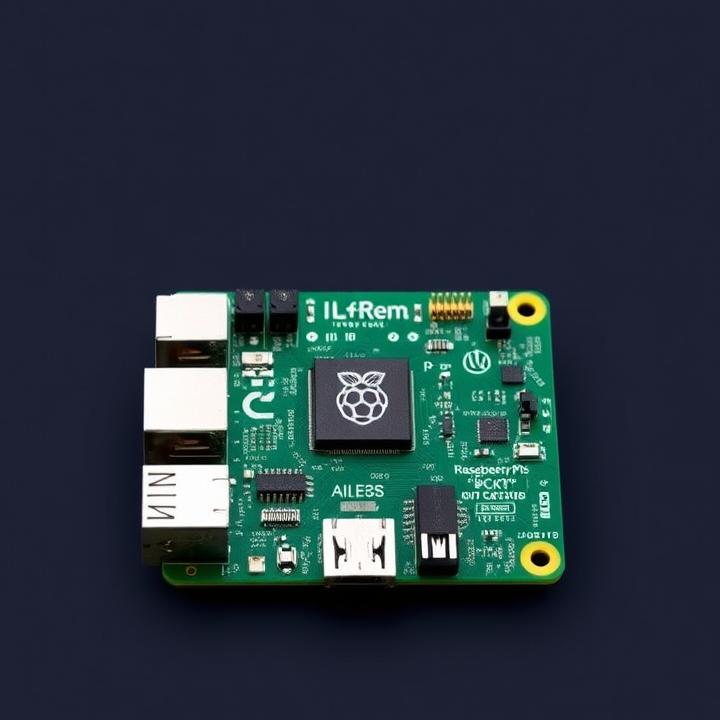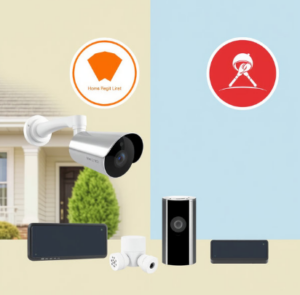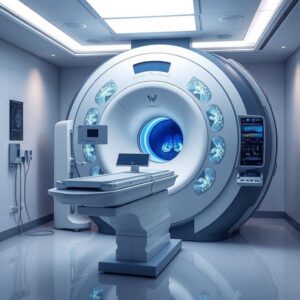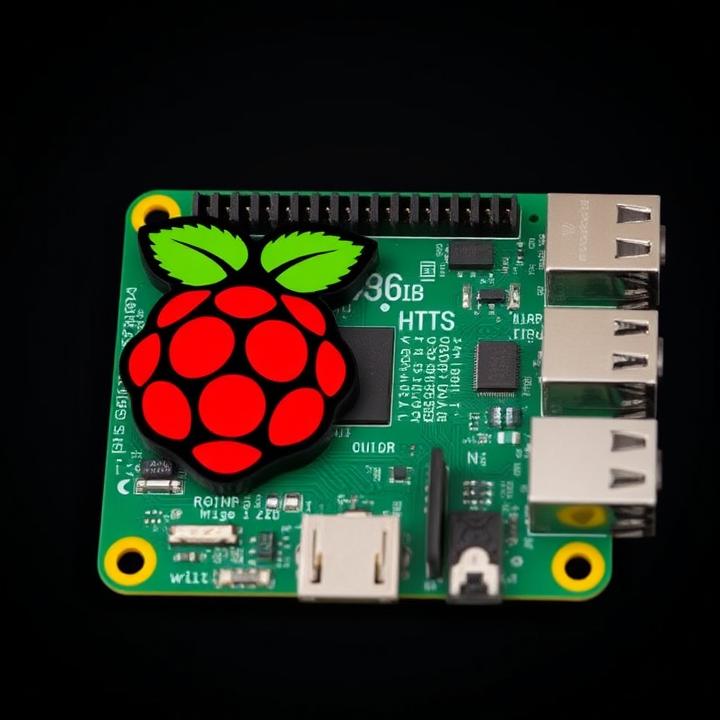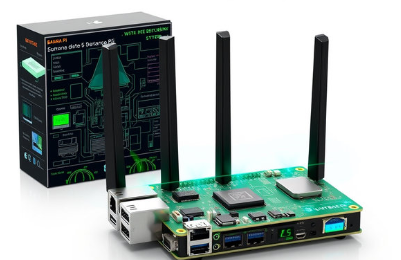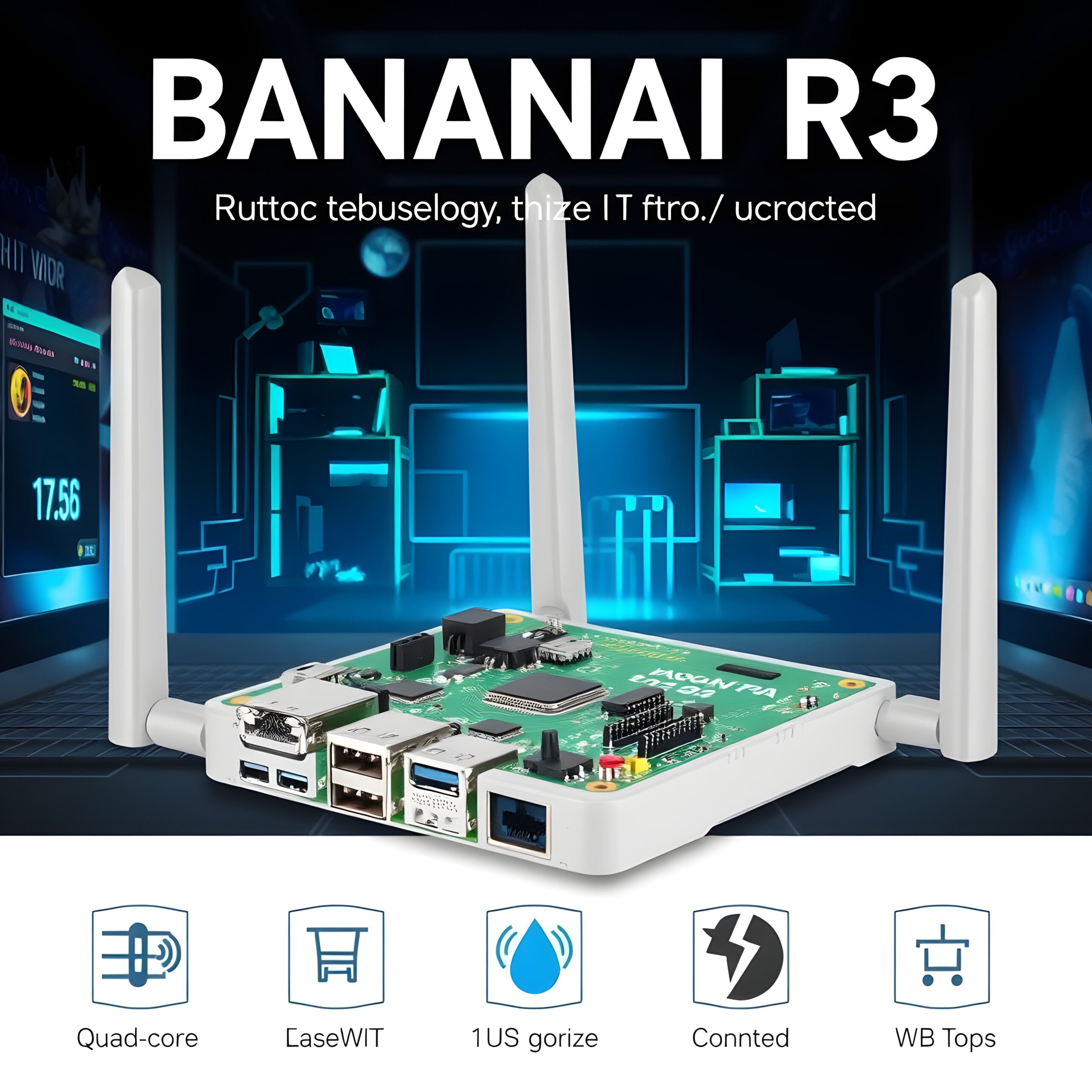Explore the versatile uses of the Raspberry Pi AI HAT+, from object recognition and robotics to medical diagnostics, smart homes, and edge computing for AI applications.
The Raspberry Pi AI HAT+, with its integration of the Hailo 8 processor, has revolutionized the way AI tasks are handled on edge devices. By bringing powerful machine learning capabilities to a compact form, it opens up a world of possibilities for developers, educators, hobbyists, and industry professionals alike. This article delves into the diverse applications of the AI HAT+, highlighting its potential across various fields and industries.
Object Recognition Systems
Object recognition is one of the standout applications for the Raspberry Pi AI HAT+, where its 26 TOPS of processing power come into play. The ability to identify and classify objects in real-time is a crucial task in many industries, from security to logistics.
Key Applications:
- Surveillance Systems: Object recognition can enhance security systems by automatically detecting suspicious objects, people, or vehicles in real-time. This eliminates the need for constant human monitoring, saving time and increasing efficiency.
- Retail Inventory Management: In retail environments, the AI HAT+ can be used to track inventory automatically. The AI system can detect when stock levels are low or when products are misplaced, streamlining inventory management.
- Smart Transportation Systems: Object recognition can also aid in autonomous vehicles or traffic monitoring systems. The AI HAT+ helps vehicles recognize pedestrians, traffic signs, and obstacles in real-time, a critical function for autonomous driving.
Benefits:
- Efficiency: Automates tedious tasks, reducing the need for manual input and allowing for faster, more accurate decision-making.
- Low Latency: With the AI HAT+’s ability to process information locally, there’s no need for data to travel to the cloud, reducing the delay between data input and output.
- Scalability: The flexibility of the Raspberry Pi means this system can be scaled to suit various project sizes, from simple DIY solutions to enterprise-level systems.
Example:
A warehouse management system can be created using the Raspberry Pi AI HAT+ to monitor the placement and movement of items on shelves, automating the process of sorting and stock-taking.
Facial Recognition for Access Control
Facial recognition powered by the AI HAT+ is a secure and effective solution for access control systems, where accurate identity verification is essential. The high-performance Hailo 8 processor makes real-time processing of facial data possible, allowing for smooth and seamless access management.
Key Applications:
- Home Security Systems: With facial recognition, users can integrate this technology into smart door systems that automatically unlock for recognized individuals. This adds an extra layer of security for homes and businesses.
- Workplace Management: In offices, the AI HAT+ can streamline attendance management. Employees can simply walk into the office, and their faces will be scanned to mark their attendance automatically.
- Event Security: Large-scale events and venues benefit from using facial recognition to provide faster entry, identifying authorized personnel or guests while keeping track of attendees.
Benefits:
- Enhanced Security: Facial recognition is harder to bypass compared to traditional security methods such as keycards or passwords.
- Privacy-Focused: As all facial data is processed locally, the need to store sensitive information in the cloud is eliminated, ensuring greater privacy.
- Real-Time Processing: The AI HAT+ handles these tasks efficiently, offering near-instantaneous facial matching and access control.
Example:
A corporate office could implement facial recognition to provide access to restricted areas, ensuring only authorized personnel can enter sensitive environments.
AI-Powered Robotics
AI plays a vital role in enhancing robotics, and the Raspberry Pi AI HAT+ serves as a powerful tool for these applications. By equipping robots with the ability to process machine learning models locally, robots can function autonomously, making real-time decisions without needing constant human input.
Key Applications:
- Autonomous Navigation: The AI HAT+ enables robots to navigate through environments by detecting obstacles and adjusting paths accordingly. This is particularly useful for delivery robots or warehouse robots that must interact with dynamic, changing environments.
- Agricultural Robots: Robots can use AI to analyze plant health, detect pests, and optimize irrigation systems. These autonomous systems can significantly improve agricultural efficiency.
- Industrial Robots: In manufacturing, robots can perform quality control by detecting defects or inconsistencies in products, ensuring products meet the required standards.
Benefits:
- Autonomy: AI allows robots to make decisions independently, improving efficiency and enabling operations in environments where human presence may be difficult.
- Cost-Effective: By processing AI tasks locally with the Raspberry Pi AI HAT+, robots do not need expensive cloud-based AI infrastructure, reducing costs for deployment and operation.
- Flexibility: Robots can adapt to new tasks as they learn from new data, making them highly versatile in various industries.
Example:
An autonomous drone equipped with the AI HAT+ can inspect large infrastructure projects, such as power lines or pipelines, automatically detecting signs of wear or damage.
Smart Home Automation
Smart homes are becoming more intelligent with AI, and the Raspberry Pi AI HAT+ can be the backbone of such systems. From voice assistants to intelligent lighting, the AI HAT+ enables devices to respond intelligently to environmental changes and user preferences.
Key Applications:
- Voice Assistants: The AI HAT+ can process voice commands using natural language processing (NLP), making smart home assistants like Amazon Alexa or Google Assistant more accurate and responsive.
- Energy Management: AI can be used to optimize energy usage by adjusting smart thermostats based on user behavior patterns. For instance, it can lower heating when no one is at home or adjust lighting when it’s dark.
- Security Systems: Intelligent cameras powered by AI can detect unusual activity, differentiate between human and non-human movement, and send real-time alerts to homeowners.
Benefits:
- Efficiency: AI enables devices to learn from their environment and user behavior, providing personalized experiences.
- Energy Saving: By automating and optimizing functions like lighting and heating, AI can significantly reduce energy consumption.
- Integration: Devices powered by the Raspberry Pi AI HAT+ can be easily integrated with existing smart home ecosystems, offering flexibility and scalability.
Example:
A smart security system powered by AI can analyze camera feeds and detect unusual activity, alerting the homeowner or security personnel to potential threats in real time.
Medical Imaging and Diagnostics
AI in healthcare is revolutionizing diagnostic capabilities, and the Raspberry Pi AI HAT+ enables portable, efficient solutions for medical imaging analysis.
Key Applications:
- Disease Detection: The AI HAT+ can process medical images like X-rays, CT scans, and MRIs to detect abnormalities such as tumors or fractures.
- Telemedicine: Portable diagnostic tools powered by the AI HAT+ can bring advanced AI-based medical solutions to remote areas where healthcare professionals may not be readily available.
- Patient Monitoring: Continuous patient data, such as heart rate and temperature, can be analyzed using AI to identify early signs of distress or illness, facilitating quicker interventions.
Benefits:
- Accuracy: AI algorithms can identify patterns in medical images that may be missed by human doctors, improving diagnostic accuracy.
- Speed: AI significantly speeds up the process of analyzing medical data, allowing for faster decision-making.
- Portability: The small form factor of the Raspberry Pi allows for mobile, easy-to-deploy medical devices.
Example:
A telehealth device using the AI HAT+ could analyze a patient’s heart rate and ECG to detect early signs of heart disease and send alerts to medical professionals for intervention.
Edge AI for IoT Devices
With the rise of the Internet of Things (IoT), processing AI on the edge has become a necessity. The AI HAT+ allows IoT devices to perform complex AI tasks like sensor data analysis and anomaly detection without needing to send data to the cloud, enhancing both performance and privacy.
Key Applications:
- Smart Appliances: Home devices such as refrigerators and washing machines can learn usage patterns and optimize operations for efficiency.
- Environmental Sensors: AI-powered sensors can monitor parameters like temperature, air quality, and humidity, adjusting systems like heating, ventilation, and air conditioning (HVAC) in real-time.
- Predictive Maintenance: In industrial IoT, machines equipped with AI can predict potential failures by analyzing real-time sensor data, enabling preemptive maintenance.
Benefits:
- Reduced Latency: Local data processing reduces the delay between data capture and action, making systems more responsive.
- Cost Savings: Edge AI minimizes the need for cloud-based infrastructure, lowering operational costs.
- Data Privacy: By processing data locally, edge devices ensure sensitive information is not transmitted or stored on external servers.
Example:
An environmental monitoring system powered by the AI HAT+ could continuously analyze air quality and adjust ventilation in real-time to ensure optimal conditions.
Education and Research
The Raspberry Pi AI HAT+ is an invaluable tool for educational institutions and researchers, providing a low-cost yet powerful solution for AI-based learning and experimentation.
Key Applications:
- STEM Education: The AI HAT+ allows students to explore machine learning, robotics, and AI principles through hands-on projects. Its accessibility makes it ideal for educational programs.
- AI Research: Researchers can test and run machine learning algorithms on the Raspberry Pi, using the AI HAT+ for practical applications and proof-of-concept testing.
- Hackathons and Competitions: The HAT+ is a popular choice in hackathons, where participants use it to develop innovative AI-driven projects.
Benefits:
- Affordability: Compared to traditional AI hardware, the Raspberry Pi AI HAT+ offers a more affordable solution for educational### 8. Real-Time Video Processing
Real-time video processing is another area where the Raspberry Pi AI HAT+ excels. With its powerful Hailo 8 processor, it can efficiently process video feeds, making it ideal for applications in live streaming, video surveillance, and automated video editing.
Key Applications:
- Content Creation: Content creators can use the AI HAT+ to automatically enhance or edit their video streams. AI-driven systems can perform real-time color correction, object tracking, and video stabilization without requiring powerful, expensive equipment.
- Streaming Services: AI-enhanced streaming platforms benefit from lower latency and better video quality. The AI HAT+ can improve compression algorithms or handle real-time video editing to ensure smooth viewing experiences.
- Surveillance Systems: Surveillance cameras can automatically detect and classify objects or people in video feeds. Real-time video analysis can identify incidents like theft, accidents, or unauthorized access, triggering immediate alerts.
Benefits:
- Speed: With real-time processing, video content can be analyzed and edited on the fly, enhancing live streaming quality and response times in security systems.
- Lower Costs: The AI HAT+ provides an affordable, high-performance solution compared to cloud-based or larger infrastructure setups.
- Privacy: As all video processing is handled locally, sensitive video data does not need to be transmitted or stored externally, ensuring greater privacy.
Example:
A live streaming platform can use the AI HAT+ to automatically generate captions, enhance video quality, and moderate inappropriate content during real-time broadcasts.
FAQ Section: Raspberry Pi AI HAT+ Uses
What is the primary purpose of the Raspberry Pi AI HAT+? The primary purpose of the Raspberry Pi AI HAT+ is to bring advanced machine learning capabilities to Raspberry Pi devices. By utilizing the Hailo 8 processor, it enables local AI and deep learning tasks such as object recognition, facial recognition, video processing, and more, all without requiring cloud-based resources.
How does the AI HAT+ handle object recognition tasks? The AI HAT+ processes object recognition tasks by analyzing images or video frames using deep learning models. The Hailo 8 processor can handle up to 26 TOPS (Tera Operations Per Second), allowing real-time detection of objects such as people, vehicles, or products in images. It improves accuracy and efficiency in industries like security and inventory management.
Can the AI HAT+ be used in robotics? Yes, the AI HAT+ is ideal for use in robotics. It allows robots to process information locally, making them autonomous. Robots can use it for tasks like autonomous navigation, quality control, and agriculture-related tasks. Its ability to process real-time data means robots can avoid obstacles and make intelligent decisions in dynamic environments.
What are the benefits of using the AI HAT+ for facial recognition? The AI HAT+ enables real-time facial recognition with high accuracy and speed. It processes facial data locally, providing enhanced security in access control systems. Benefits include increased security, privacy (since no data is sent to the cloud), and efficiency as the system can recognize faces in a matter of milliseconds.
How does the AI HAT+ improve smart home devices? The AI HAT+ can improve smart home systems by enabling devices to understand user behaviors and preferences. It enhances devices like voice assistants by processing natural language commands locally, making interactions faster and more accurate. It can also optimize energy usage and improve security through AI-powered cameras and monitoring systems.
Is the AI HAT+ suitable for medical applications? Yes, the AI HAT+ is highly suitable for medical applications. It can be used in medical imaging, where it processes data such as X-rays and CT scans to detect diseases and abnormalities. Additionally, it supports telemedicine devices, providing doctors with remote diagnostics and monitoring capabilities.
How does the AI HAT+ enable edge computing for IoT devices? The AI HAT+ allows IoT devices to process data locally on the device rather than relying on cloud computing. This reduces latency, saves on bandwidth, and enhances privacy. IoT devices can use it to perform real-time analytics for applications like smart appliances, predictive maintenance, and environmental monitoring.
Can the AI HAT+ be used in educational projects? Absolutely. The AI HAT+ is an excellent tool for STEM education and research. It allows students and researchers to explore AI, machine learning, and robotics through hands-on projects. With its affordability and versatility, it can be used in schools and universities to teach concepts like AI modeling, object recognition, and robotics.
What are the advantages of using the AI HAT+ for video processing? The AI HAT+ is highly efficient at real-time video processing. It can analyze and edit video streams without the need for cloud services. Benefits include lower latency, enhanced video quality, and the ability to moderate content in real-time. It is particularly useful in live streaming and video surveillance applications.
Is the AI HAT+ energy-efficient for AI applications? Yes, the AI HAT+ is energy-efficient. By performing AI tasks locally, it eliminates the need for large, energy-consuming cloud-based servers. Its compact design and efficient processing power make it an ideal solution for energy-conscious AI applications, especially in devices that require continuous or mobile operation.
The Raspberry Pi AI HAT+ is a versatile and powerful tool that brings advanced AI capabilities to a wide range of applications. From object recognition and facial recognition to smart home automation, robotics, and medical diagnostics, the AI HAT+ proves to be a game-changer in edge computing and AI technology. Its ability to process complex tasks locally, without the need for cloud-based infrastructure, ensures faster, more reliable, and cost-effective solutions for developers and professionals in various industries.

